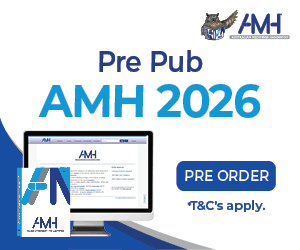Nursing and midwifery are professions that involve giving part of ourselves at work.
By default, we are attracted to the profession because we are natural empaths. In our day-to-day caring, we engage emotionally with our patients and clients. Sometimes this engagement is positive- for example, when a mother gives birth to her first child and her midwife shares her joy. Other times it is negative- for example, a patient retelling their trauma to an ED nurse.
For nurses and midwives, empathy is a powerful tool to relate to our patients. But this empathy has a cost, especially from a negative experience. This cost is called compassion fatigue or burnout; in some scenarios it is called vicarious trauma. Vicarious trauma appears when we empathically engage with our patients – we bear witness to our clients’ trauma through their recounting of their story.
Over time, the compensatory mechanism to cope with these experiences grinds us down, leading the carer to experience vicarious trauma. This suffering leaves the carers fatigued and the inevitable sequel to repeated exposure to trauma-focused interactions.
Symptoms may include:
- Decreased concentration span
- Anxiety, numbness, depression
- Hypersensitivity, hypervigilance
- Powerlessness, feeling overwhelmed
- Impacts in personal relationships
- Changes in appetite, sleep disturbances
- Arousal of nervous system
- Career fatigue
As nurses and midwives, we must recognise that during stressful encounters with our patients we are at risk of vicarious trauma. Well developed self-care strategies are therefore required.
As carers and empaths, this risk of distress from vicarious trauma is very real. If you have had prior or unresolved traumas, your risk is increased. Your own personal capacity to deal with stress, your current personal life circumstances, your support system and your professional history can all affect your risk.
So how do we withstand the buffeting by secondhand trauma, these cumulative effects of the myriad of psychological wounds inflicted on us while at work? How do we find balance and healing?
All nurses, midwives and carers need an appropriate work/life balance – the ideal equilibrium between career and personal life. We need downtime to rest, rejuvenate, interact with our families and practice self-care.
This is one of the most vital strategies to minimise risk of vicarious trauma; it is imperative to look after our psychological, spiritual and physical health. A good foundation of self-care provides a buffer of resilience, so when stressors shock us, we have enough internal resources to absorb and recover.
Some self-care tactics include:
SUPPORT GROUPS/DEBRIEFING
After stressful shifts, one of the most important strategies is to sit down and debrief with your colleagues or a significant person in your work life.
EXERCISE
Exercise improves mental health by reducing anxiety, depression, and negative mood and by improving self-esteem and cognitive function. Physical activity prompts the release of feel good chemicals like endorphins and serotonin in the brain.
GOOD DIET
A healthy, well-balanced diet improves physical health. It also improves sleep, energy levels and decreases our chance of illness
GOOD SLEEP
After a good night’s sleep, the world appears fresh and optimistic. Sleeping well increases your mental capacity to deal with daily stressors.
MAINTAINING GOOD RELATIONSHIPS
These relationships help maintain a good life/work balance. A fulfilling social life allows for debriefing, relaxing, and smoothing the rough edges of a disturbing day.
REFLECTIVE PRACTICE AND AWARENESS
Awareness of vicarious trauma reduces its potential harm. Mindfulness of our behaviours provides us with the opportunity to change our technique and then employ self-care strategies.
Vicarious trauma is a condition that is not well known among nurses and midwives. It may sound similar to signs and symptoms of carer’s fatigue (ie. burnout), but vicarious trauma is the profound shift in world view that occurs when we work with clients who have experienced trauma or we experience the repeated exposure to traumatic material. As nurses and midwives, we need to be aware that vicarious trauma exists, recognise its signs and practice self-care techniques to help us heal and build resilience.








One Response
Well done James nicely written, the message contained needs to be repeated frequently thank you Paul